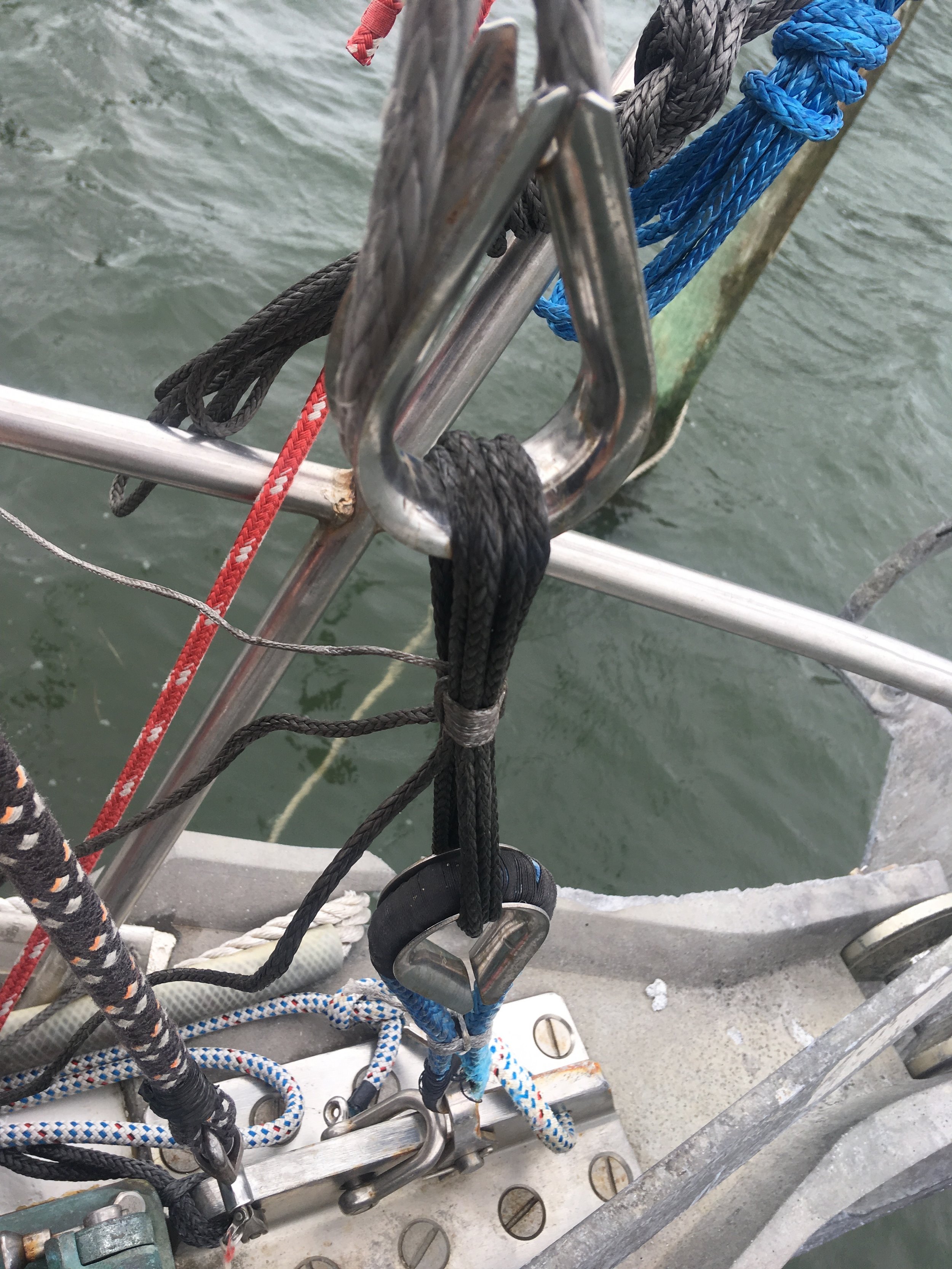I know I focus a lot on Synthetic Standing Rigging on this blog, but there is one important point to make about all rigging: They work until they fail.
Replacing steel standing rigging to synthetic standing rigging is a waste of money. Rigging is expensive and while synthetic standing rigging is cheaper than steel standing rigging, the cheapest standing rigging is the one you already have!
This is why I feel it is important to know how to look at your steel standing rigging to better determine when it needs replacing. Once your rigging needs replacing, that is when deciding what material to go with makes monetary sense!
This is what your standard 1x19 Stainless Steel wire (304, 316, or 316L) should look like. All the strands are pretty, polished, and clean. There are no signs of corrosion or other problems with the wire. Dirt is a fact of life and should not be a cause for alarm. Some boat owners go above and beyond to keep dirt out of every surface of their yachts; and while this is a positive trait in someone selling you a boat, it is also not practical or realistic to keep every inch of wire on a sailboat clean and free of dirt or debris!
Now we start to see problems develop. This wire is still in adequate condition for now, but its end is approaching. This is when you should begin saving up for the cost of replacing your rigging and deciding what material you wish to replace your standing rigging with!
Are you going to replace your rigging yourself or are you going to pay a rigger to do it? If you are going to pay someone, will they come to your boat or do you need to take your boat to the yard where they work? This would also be a good time to start collecting estimates from different riggers that way you know where you will be going when the end of the line finally comes.
When your rigging looks like this, you can still sail on it, but you need to keep a close eye on your rigging because it is dying. It is not dead yet, but it will be getting there!
This is what wire looks like when it is on its last leg. You can see many spots where rust is occurring. The strands have lost their luster and appear dull and tarnished. Rust spots are less the rare occurrence and more the norm, as almost each visible strand has multiple rust spots on it.
It is important to note the strict difference between rust staining and rusting metal. If you take perfectly fine stainless steel and rest it up against a rusting piece of metal, the iron oxide from the rusting metal will stain your perfectly fine stainless steel. This means that if you have a low quality piece of metal attached to your rigging and it begins to rust, the metal of the stay near this will develop a rust color. Rust stains polish off and the wire will go back to looking like new.
If the wire itself is rusting, there is no amount of polishing that can be done to remove all the rust and restore the original luster of the wire. When the stay itself is rusting, that is when it is at the end of its lifespan.
When the stay begins to corrode like this, it should be replaced promptly. Yes, you can still sail in light conditions with it as it has now “failed” yet, but it will soon fail and should be replaced.
Failed rigging is when it actually breaks, and while you can sail with your rigging until that occurs, the problem is that when a failure occurs during use, the repairs tend to be rather costly!
Imagine for a moment that you have your sailboat sitting in the slip and the port cap shroud begins to develop significant corrosion. At this point, your sailboat is sitting in the slip with the mast standing straight and tall. Nothing has broken or given way yet.
You make arrangements and either replace the stay yourself or hire a rigger to replace the stay for you. Then you go sailing with your new stay and nothing happens.
Now lets imagine the same situation but instead of replacing the stay when it was dying, you wait for the stay to fully die. You are sailing along on a close reach on starboard tack. The spray is coming over the bow and you are heeling well to leeward. Everything is wonderful and then you tack. Now all that load is on the corroding port cap shroud and the failing stay finally fails. The wires break and the mast becomes unsupported. The cap shroud had broken and the only think holding the mast up in the air are the lower shrouds! The force of the wind on the main and headsail pull harshly against the top of the mast which is no longer being supported by the port cap shroud and the mast begins to bend. The mast bends further and further causing the sails to become baggy and hold even more wind, and pulling even harder on the unsupported mast until it buckles at the lower spreader attachment.
Now you have a broken mast as well as a failed port cap shroud!
This is why you want to replace your stays when they are failing instead of waiting for them to fail.

















